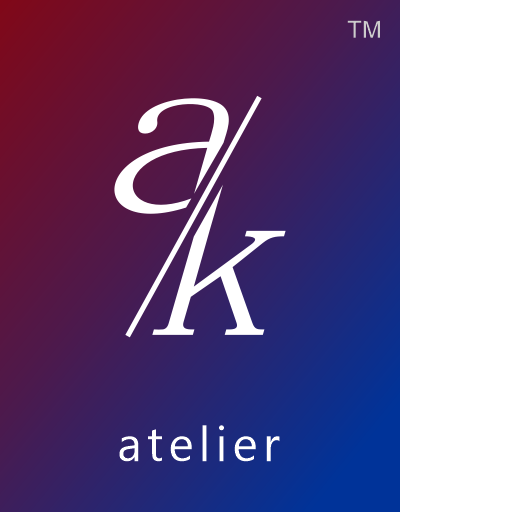
The Psychology of Intuitive UI/UX: Designing for the Mind, Not Just the Screen
In a world of digital overload, where users are bombarded with content, choices, and distractions across platforms, what separates an average digital product from an exceptional one? The answer often lies in a deceptively simple trait: intuitiveness. But make no mistake—intuitive user interfaces and experiences are not the result of luck or minimalism alone. They are rooted in behavioral psychology, neuroscience, and human-centered thinking.
For master designers and business leaders alike, understanding the psychology behind intuitive UI/UX is no longer optional—it is foundational. Intuitive design is what makes an app feel invisible in use, where users glide through interactions with ease, barely noticing the interface itself. It turns usability into delight, confusion into confidence, and friction into flow.
At Air/Kraft Atelier, we believe designing intuitive products means designing for the mind, not just for the machine. Here’s how we apply core psychological principles to create digital experiences that are not only beautiful but also behaviorally aligned.
Why Intuition Matters in UI/UX
Let’s begin with a fundamental truth: users don’t read manuals. They don’t want to think too hard, and they don’t want to feel lost. They want to act, explore, and achieve goals—quickly and confidently.
An intuitive interface meets the user where they are:
- It anticipates intent
- It minimizes cognitive load
- It leverages learned behaviors and mental models
- It guides, not dictates
From a business standpoint, intuitive design leads to:
- Faster user onboarding
- Increased engagement and retention
- Reduced error rates and support queries
- Stronger user trust and brand affinity
The return on investing in intuitive design is measurable—and exponential.
Core Psychological Principles That Drive Intuitive UI/UX
Let’s explore the key psychological principles that serve as the scaffolding behind effortless digital experiences.
1. Fitts' Law
"The time to acquire a target is a function of the distance to and size of the target."
In other words: the closer and larger something is, the faster users can interact with it. This principle is crucial for:
- Call-to-action buttons (make them prominent and accessible)
- Navigation menus (place them within thumb or mouse reach)
- Responsive layouts (especially on mobile and tablet screens)
Insight: Don’t bury critical actions or make them small—design for muscle memory and reachability.
2. Hick’s Law
"The time it takes to make a decision increases with the number and complexity of choices."
This principle champions simplicity:
- Limit choices on any given screen
- Use progressive disclosure (show options gradually)
- Group related elements together
Insight: Choice is good—but too much choice creates paralysis. Curate the path, don’t clutter it.
3. Jakob’s Law
"Users spend most of their time on other sites. They prefer your site to work the same way as others they already know."
Innovation is good, but familiarity builds trust.
- Follow established patterns (e.g., cart icon, hamburger menu, pagination)
- Maintain UI consistency across pages
- Don’t reinvent the scroll bar—unless you’re adding value
Insight: Break convention only when you can offer something better, not just different.
4. Gestalt Principles of Perception
Gestalt psychology explains how humans perceive visual elements not in isolation, but as part of a whole. These principles help organize complexity into clarity:
- Proximity: Items close together are seen as related
- Similarity: Elements that look alike are grouped mentally
- Continuity: Users follow lines and curves naturally
- Closure: The mind fills in missing information to complete a shape
- Common Fate: Items moving in the same direction are perceived as a group
Insight: Use spacing, alignment, and visual grouping to create order. Don’t let the user guess what belongs where.
5. Cognitive Load Theory
Cognitive load refers to the amount of mental effort needed to process information. In UI/UX, the goal is to reduce unnecessary thinking so users can focus on their task.
Ways to reduce cognitive load:
- Clear, concise labels
- Predictable interactions
- Visual hierarchy and contrast
- Minimizing multitasking or unnecessary steps
Insight: Remove friction. Every extra step is a tax on the brain.
6. The Peak-End Rule
People judge an experience largely based on how they felt at its peak and end. Design for emotional moments:
- Add microinteractions at key points
- Celebrate completion with delightful animations or affirmations
- Ensure the final step (confirmation, delivery, logout) feels polished and rewarding
Insight: Users may forget the journey—but they’ll remember the highlight and the goodbye.
7. Miller’s Law
"The average person can only hold 7 (±2) items in their working memory."
This doesn’t mean your nav bar should have nine links. It means:
- Break content into chunks
- Use bullets, cards, and sections
- Don’t overload with information upfront
Insight: Structure information the way the brain digests it: in chunks.
The Designer’s Role: From Creator to Cognitive Companion
Designers must become translators of thought, not just stylists of screens. This means:
- Understanding how humans perceive and decide
- Designing for instinct, not just intention
- Balancing emotional appeal with usability precision
Intuitive design is invisible—but that invisibility is a design achievement, not an accident.
Business Implications of Intuitive UI/UX
For business stakeholders, intuitive design directly impacts:
- Customer Acquisition: First impressions matter. If a new user feels lost, they won’t return.
- Conversion Rates: Fewer obstacles = faster decisions = more conversions.
- Support Costs: An intuitive interface reduces the need for help documentation or support tickets.
- Brand Equity: A fluid user experience builds trust, brand love, and referrals.
Investing in behavioral UI/UX isn’t a luxury—it’s a multiplier of every other effort.
How We Apply This at Air/Kraft Atelier
At Air/Kraft Atelier, our approach blends creative intuition with psychological precision. We don’t just ask what the interface should look like—we ask:
- What does the user expect to happen here?
- How can we preempt confusion?
- What can we remove without reducing impact?
- Where can emotion enhance utility?
We craft design systems that support cognition, reduce ambiguity, and create seamless paths to success.
Our process includes:
- Behavioral Mapping: Understanding mental models and user goals
- Cognitive Stress Tests: Identifying overload points in workflows
- Friction Audits: Removing redundant or confusing elements
- UX Writing Strategy: Voice, tone, and clarity at every step
The result? Interfaces that feel effortless—and quietly powerful.
The Future of Intuitive UX: Predictive, Adaptive, Empathetic
As AI and personalization tools advance, intuitive UX will evolve into anticipatory UX:
- Interfaces that adapt based on context and usage patterns
- Emotion-aware interfaces that adjust based on facial expressions or tone
- Accessibility-first design that customizes for neurodiverse and disabled users
The psychology remains the same—but the tools will be more dynamic and responsive.
Final Thoughts
Intuitive UI/UX is not about simplifying until nothing remains. It’s about aligning with how humans perceive, decide, and feel.
At Air/Kraft Atelier, we believe that designing for the human mind is the highest form of digital craftsmanship. It honors the user, elevates the brand, and drives success at every level.
Because at the end of the day, intuitive design doesn’t just create better products—it creates better experiences, one seamless interaction at a time.
Let’s make your digital product feel intuitive—because brilliance should feel effortless. Connect with Air/Kraft Atelier today.

